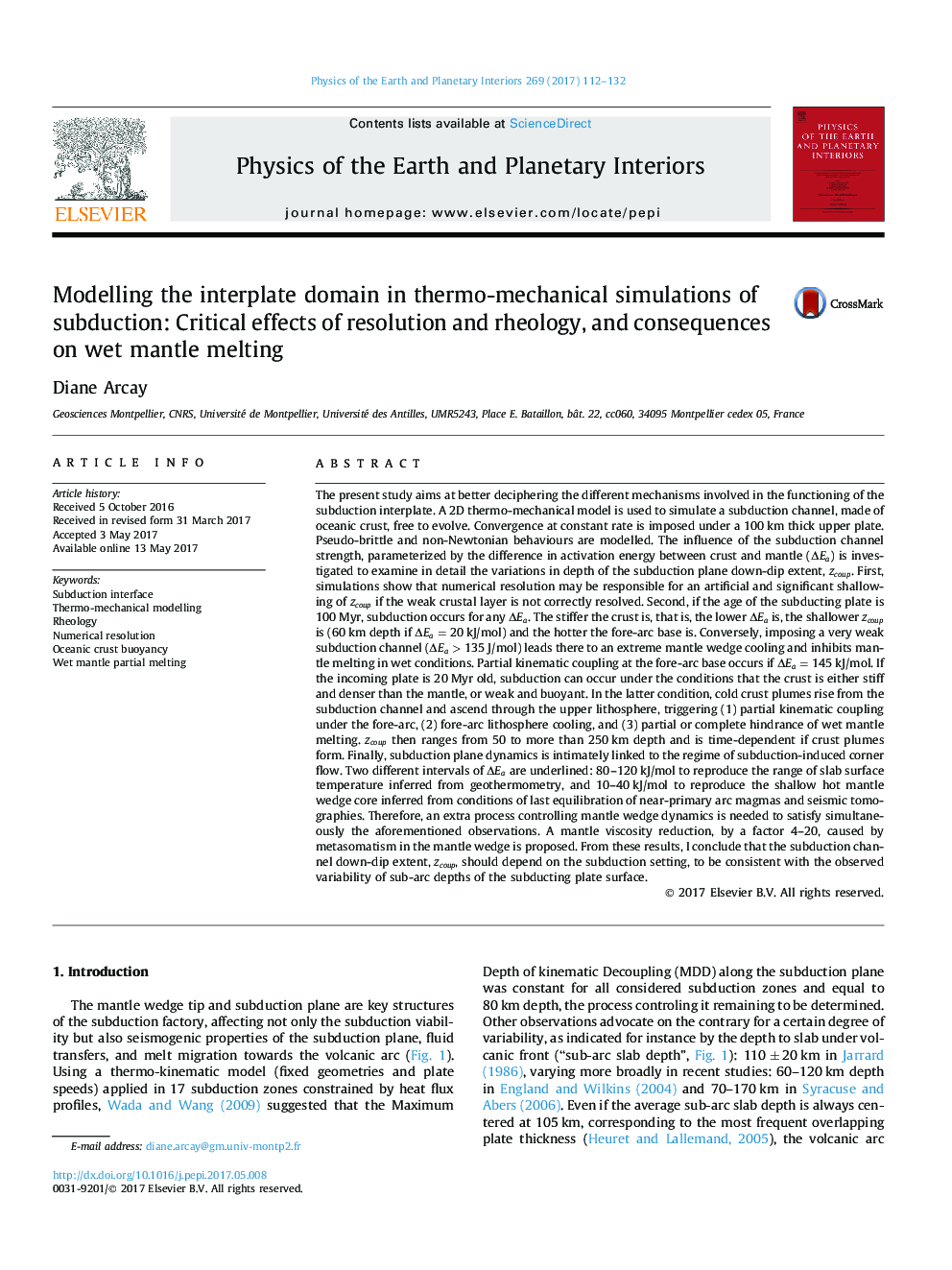| Article ID | Journal | Published Year | Pages | File Type |
|---|---|---|---|---|
| 5787303 | Physics of the Earth and Planetary Interiors | 2017 | 21 Pages |
Abstract
The present study aims at better deciphering the different mechanisms involved in the functioning of the subduction interplate. A 2D thermo-mechanical model is used to simulate a subduction channel, made of oceanic crust, free to evolve. Convergence at constant rate is imposed under a 100Â km thick upper plate. Pseudo-brittle and non-Newtonian behaviours are modelled. The influence of the subduction channel strength, parameterized by the difference in activation energy between crust and mantle (ÎEa) is investigated to examine in detail the variations in depth of the subduction plane down-dip extent, zcoup. First, simulations show that numerical resolution may be responsible for an artificial and significant shallowing of zcoup if the weak crustal layer is not correctly resolved. Second, if the age of the subducting plate is 100Â Myr, subduction occurs for any ÎEa. The stiffer the crust is, that is, the lower ÎEa is, the shallower zcoup is (60Â km depth if ÎEa=20Â kJ/mol) and the hotter the fore-arc base is. Conversely, imposing a very weak subduction channel (ÎEa>135Â J/mol) leads there to an extreme mantle wedge cooling and inhibits mantle melting in wet conditions. Partial kinematic coupling at the fore-arc base occurs if ÎEa=145Â kJ/mol. If the incoming plate is 20Â Myr old, subduction can occur under the conditions that the crust is either stiff and denser than the mantle, or weak and buoyant. In the latter condition, cold crust plumes rise from the subduction channel and ascend through the upper lithosphere, triggering (1) partial kinematic coupling under the fore-arc, (2) fore-arc lithosphere cooling, and (3) partial or complete hindrance of wet mantle melting. zcoup then ranges from 50 to more than 250Â km depth and is time-dependent if crust plumes form. Finally, subduction plane dynamics is intimately linked to the regime of subduction-induced corner flow. Two different intervals of ÎEa are underlined: 80-120Â kJ/mol to reproduce the range of slab surface temperature inferred from geothermometry, and 10-40Â kJ/mol to reproduce the shallow hot mantle wedge core inferred from conditions of last equilibration of near-primary arc magmas and seismic tomographies. Therefore, an extra process controlling mantle wedge dynamics is needed to satisfy simultaneously the aforementioned observations. A mantle viscosity reduction, by a factor 4-20, caused by metasomatism in the mantle wedge is proposed. From these results, I conclude that the subduction channel down-dip extent, zcoup, should depend on the subduction setting, to be consistent with the observed variability of sub-arc depths of the subducting plate surface.
Related Topics
Physical Sciences and Engineering
Earth and Planetary Sciences
Geophysics
Authors
Diane Arcay,
